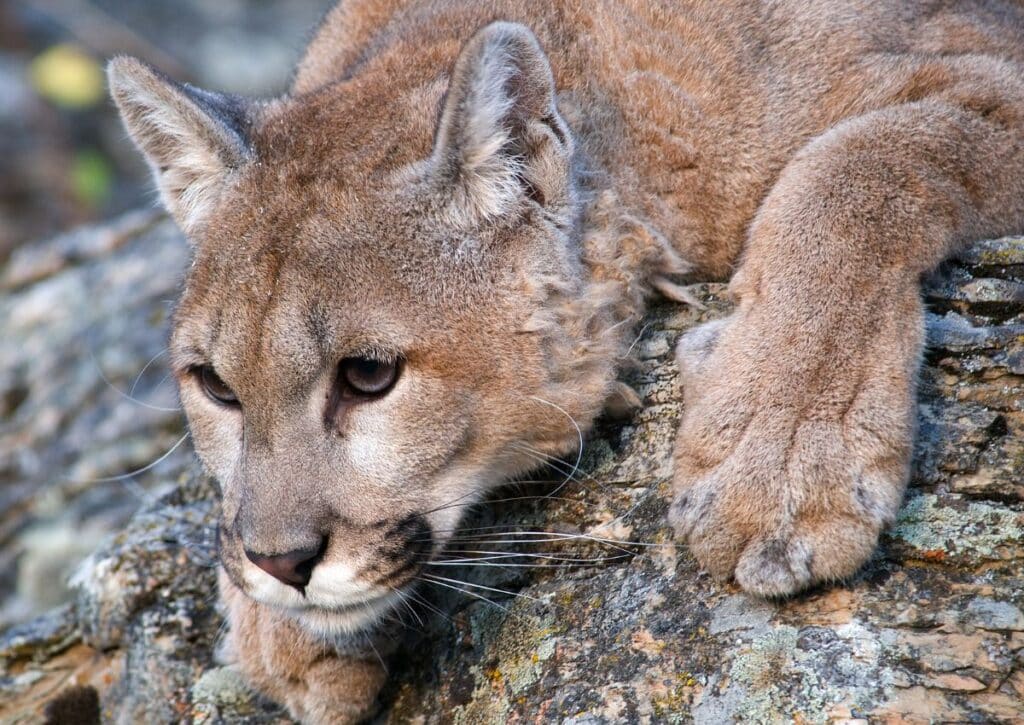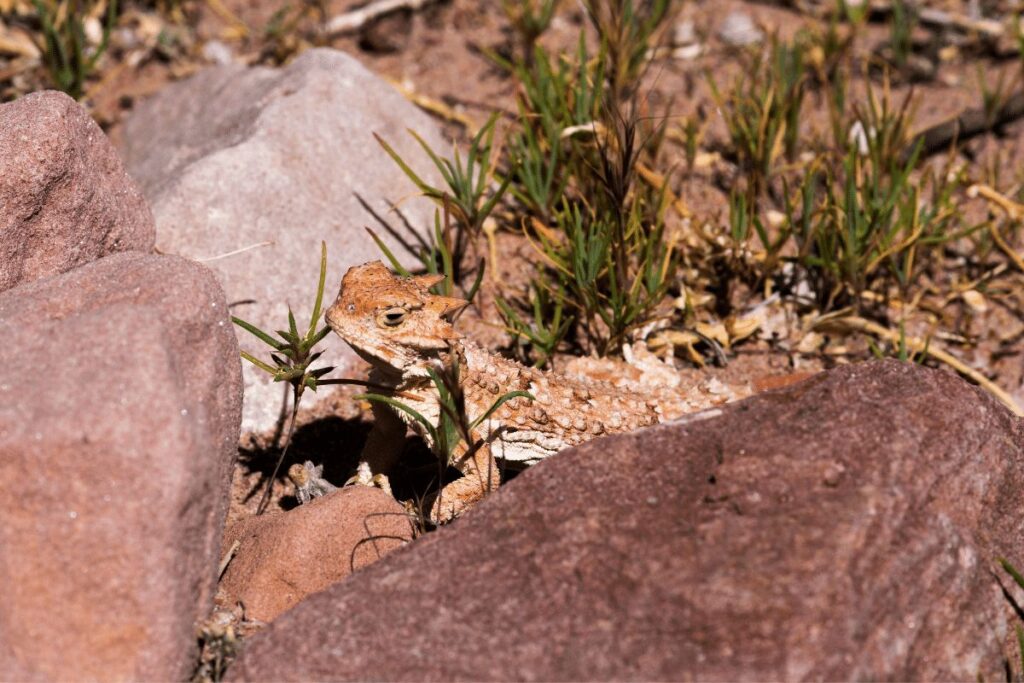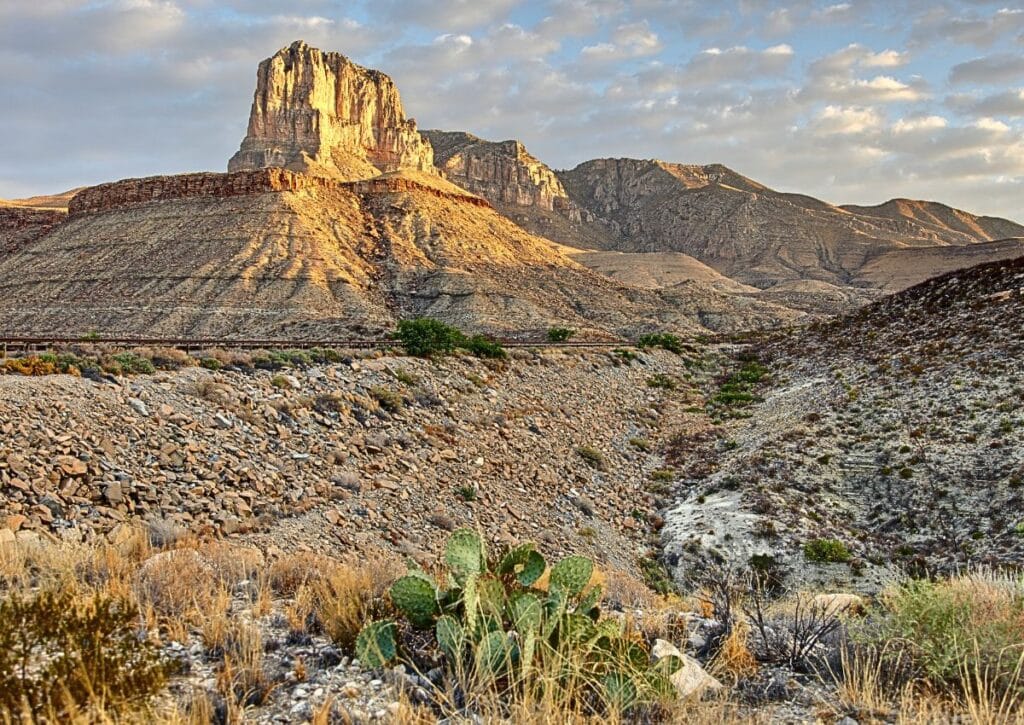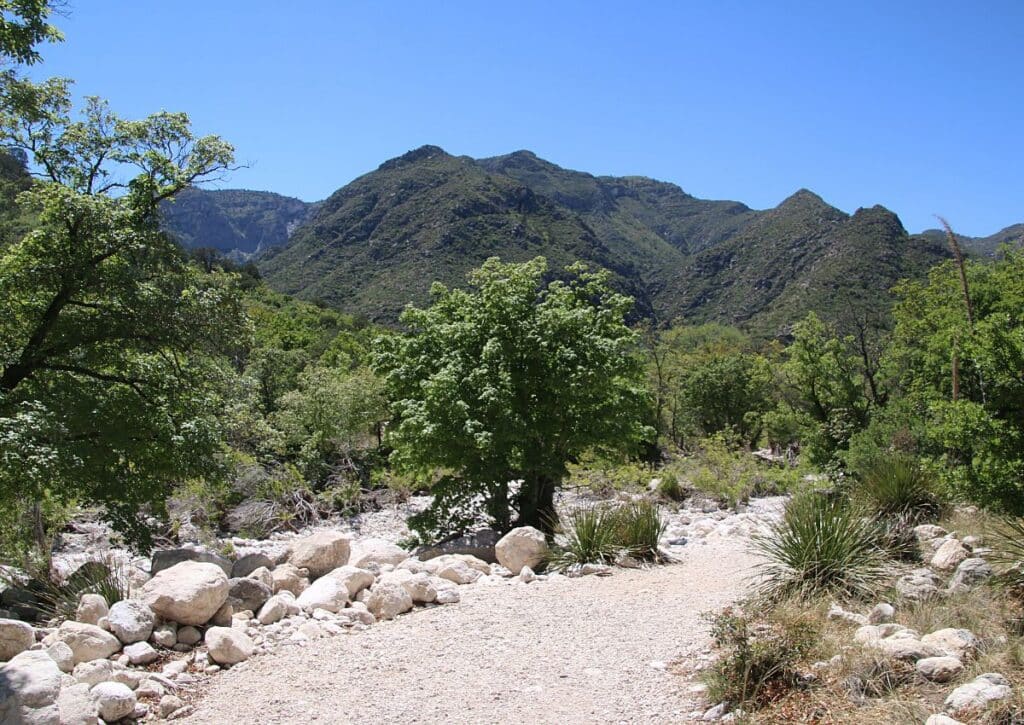Discover the secretive lives of mountain lions in Guadalupe Mountains National Park and plan safe wildlife-rich hikes with this guide.
Yes, Guadalupe Mountains National Park is indeed home to mountain lions. Covering the entirety of the park, from the dense woodlands to the high-altitude trails, every inch can be considered mountain lion habitat.
Although sightings are rare, given the elusive nature of these magnificent predators, their presence is undeniable.
Mountain lions, often referred to as cougars or pumas, are an integral part of the park’s ecosystem.
Their role as apex predators helps maintain a balanced and healthy environment, ensuring the survival and thriving of other species within the park’s boundaries.
For those keen on understanding more about the mountain lions of Guadalupe Mountains National Park, and the environment they inhabit, you’re in the right place. Dive in as we explore their world in detail.
Are there mountain lions in Guadalupe Mountains National Park?
Located in West Texas, Guadalupe Mountains National Park spans over 86,000 acres of protected land. This park boasts a variety of terrains, from Guadalupe Peak, Texas’ highest point, to dense woodlands and deep canyons.
Its biodiversity is impressive. With over 1,000 species of plants, it offers a dynamic flora landscape.
The fauna is no less diverse, housing over 60 mammal species, 289 bird species, and a multitude of reptiles and amphibians, including mule deer, golden eagles, and black-tailed rattlesnakes.
For travelers keen on understanding the park’s wildlife, it’s important to note that mountain lions, also referred to as cougars or pumas, are present in Guadalupe Mountains National Park. While sightings are rare due to their elusive nature, travelers should be aware of their existence and take necessary precautions when exploring the park.
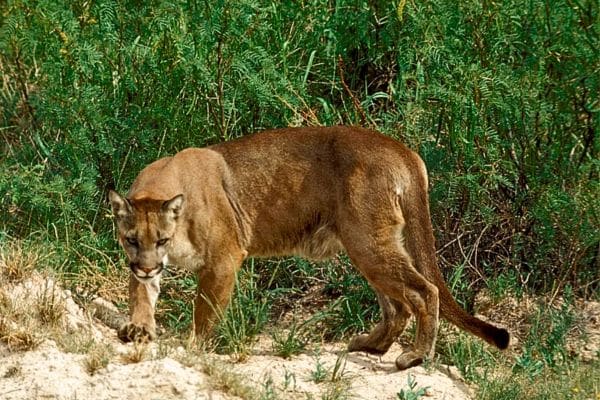
Their role in the ecosystem is vital, helping to maintain the balance of species and contributing to the park’s rich biodiversity.
Mountain Lion Habits and Habitats in Guadalupe Mountains National Park
Mountain lions, also known as cougars or pumas, are apex predators known for their stealth, agility, and territorial nature. In Guadalupe Mountains National Park, these magnificent creatures play a crucial role in the ecosystem, maintaining the balance by preying on species like deer, which helps in controlling their population.
Regions of Sighting within the Park:
Dog Canyon: Located on the park’s northern boundary, Dog Canyon is a relatively isolated area.
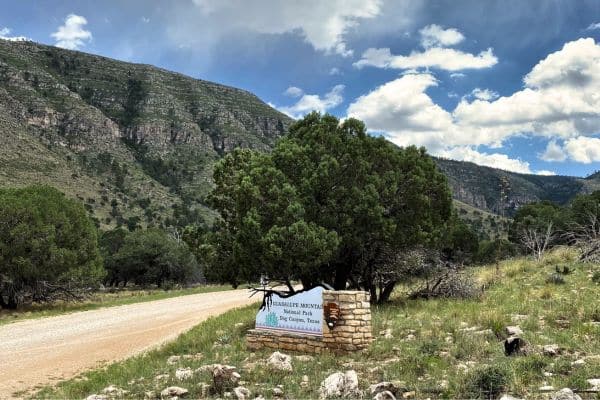
Its rugged terrains and dense vegetation offer ideal cover for mountain lions. Sightings, though not frequent, are reported by campers and hikers exploring the vicinity.
McKittrick Canyon: This beautiful canyon, known for its fall foliage and diverse plant life, also serves as a habitat for various wildlife, including mountain lions.
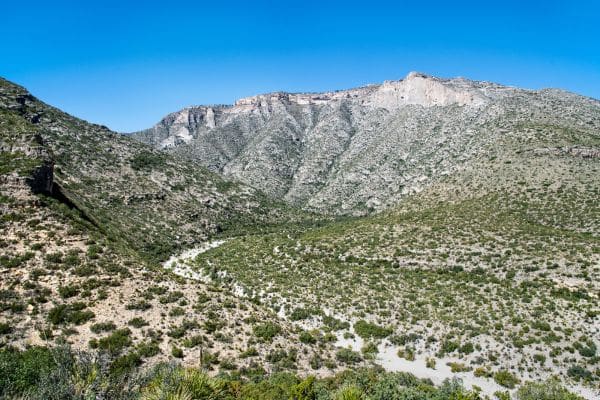
Visitors hiking in the more remote parts of this canyon have occasionally reported spotting these elusive cats.
Williams Ranch: Accessible only by a rough road, this historic ranch area offers solitude and is prime territory for mountain lions.
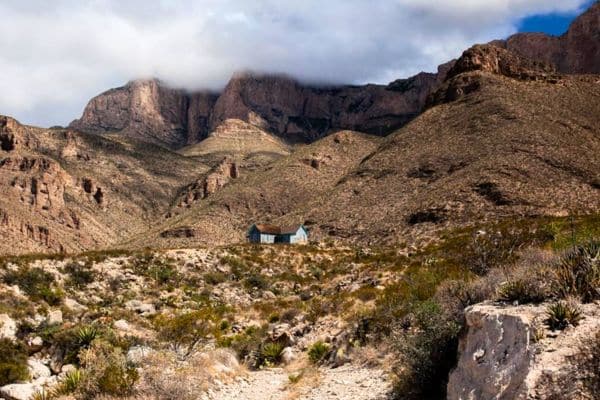
The ranch’s water sources attract a variety of prey, making it an ideal hunting ground.
Behavior and Patterns
Mountain lions in the Guadalupe Mountains are predominantly nocturnal, which means they are most active during dawn and dusk. However, they can also be active during the day, especially in cooler weather.
These cats are solitary creatures, with individual territories that can range from 50 to 150 square miles, depending on the availability of prey.
When it comes to their hunting habits, mountain lions are ambush predators. They use the park’s varied topography to their advantage, stalking their prey from a vantage point, and then attacking with a swift and powerful charge.
As for their diet in this region, it primarily consists of deer, but they also consume smaller mammals like raccoons, porcupines, and rabbits. Additionally, they are known to cover their prey with brush or soil and return to it over several days.
It’s essential for visitors to the park to be aware that while encounters with mountain lions are rare, they are still possible, especially in the aforementioned wilderness areas.
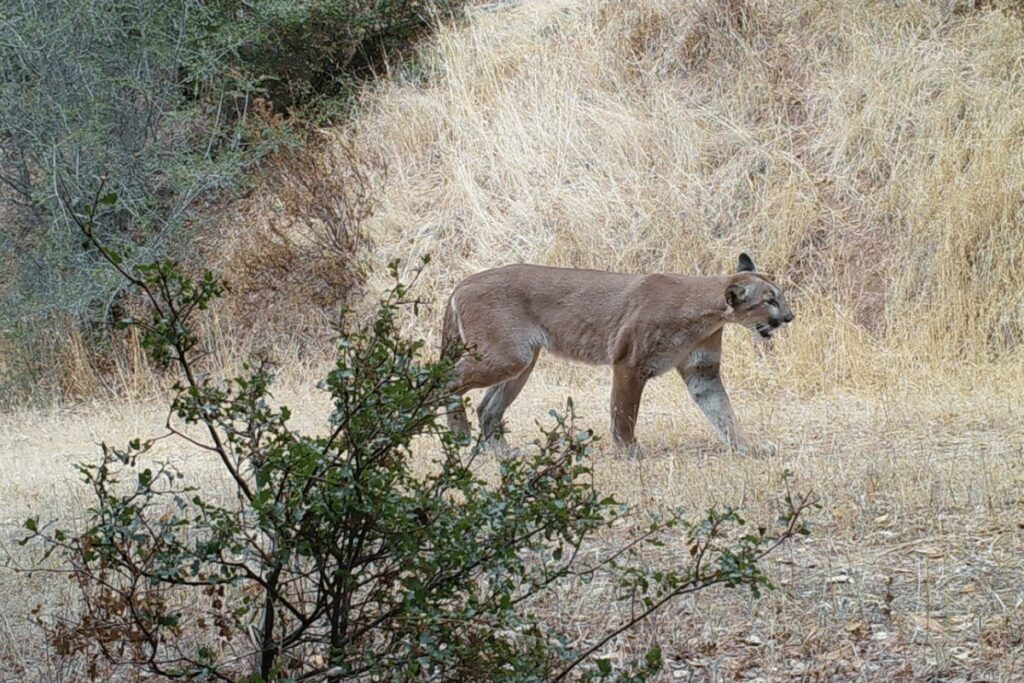
If camping, it’s advised to choose established campgrounds and keep the area clean to avoid attracting wildlife. For those venturing out on trails, it’s recommended to hike in groups, make noise to alert wildlife to your presence, and always keep children close.
While the Guadalupe Mountains offer a captivating natural spectacle, they are also home to an array of wildlife, including the majestic mountain lion. Respecting their habitat and understanding their behavior ensures a safe and memorable experience for all park visitors.
Other Wildlife in Guadalupe Mountains National Park
Beyond the elusive mountain lion, Guadalupe Mountains National Park is a sanctuary for a plethora of wildlife. The diverse habitats within the park boundaries cater to a variety of species, ensuring that visitors, especially hikers, have numerous opportunities for wildlife sightings.
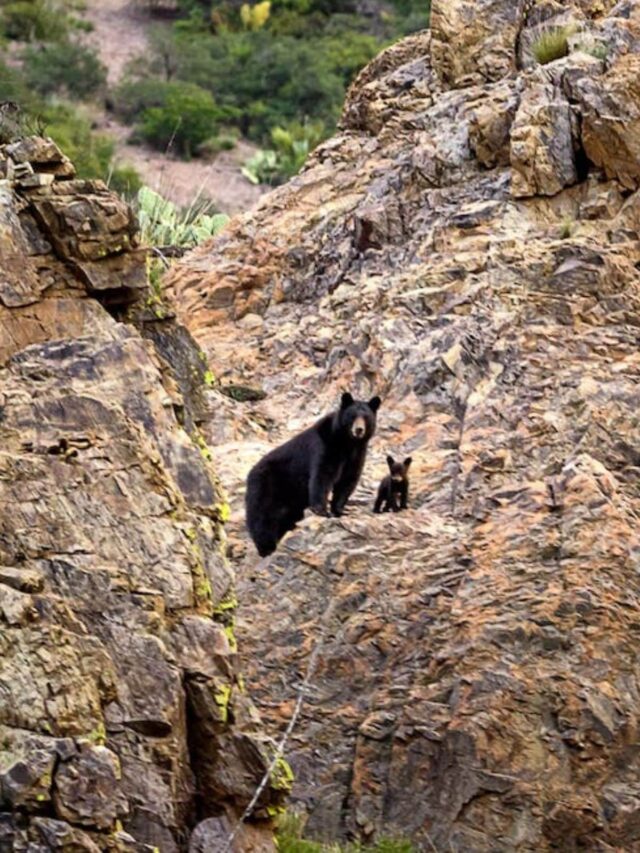
Here are some notable animals one might encounter:
Mule Deer: Among the most commonly sighted mammals, mule deer are easily distinguishable by their large ears. They often graze in the park’s meadows, especially during dawn and dusk.
Elk: Once extirpated from Texas, elk were reintroduced and can now be spotted in the park’s higher altitudes, particularly in meadows and open woodlands.
Black-tailed Rattlesnake: This venomous snake is native to the region. While it primarily avoids human interaction, it’s essential to be cautious when hiking and not to disturb any snake encountered.
Golden Eagles and Red-tailed Hawks: These majestic birds of prey soar above the park’s peaks and valleys. They play a crucial role in the ecosystem, preying on smaller animals and helping control rodent populations.
Merriam’s Wild Turkey: Native to the region, these turkeys are often seen foraging on the ground in small groups or flocks. Their unmistakable gobble can be heard, especially during the mating season.
Ringtail: Often mistaken for a small cat or a fox because of its size and bushy tail, the ringtail is a nocturnal mammal. It’s agile and often seen scaling the rocky terrains of the park during the night.
Mexican Free-tailed Bat: These bats are a fascinating sight, especially during evenings when they emerge from caves in large numbers to hunt for insects. Certain areas of the park offer a great vantage point to witness this daily exodus.
Peregrine Falcon: Known for their incredible speed when diving for prey, these falcons have been spotted nesting on the park’s cliff faces. They are a conservation success story, having rebounded from the brink of extinction.
Mountain Short-horned Lizard: This reptile, with its distinct spiky appearance, is adapted to the park’s arid conditions. They are often found basking in the sun on rocks or sandy patches.
For those venturing into the park, it’s essential to remember that while the wildlife adds to the beauty and allure of the Guadalupe Mountains, each animal plays a critical role in maintaining the ecosystem’s balance.
Observing from a distance, not feeding the animals, and respecting their habitats ensures that the park remains a haven for these species for generations to come.
Wildlife Abundant Hikes in Guadalupe Mountains National Park
For avid hikers who harbor a passion for wildlife watching, Guadalupe Mountains National Park offers a harmonious blend of nature’s wonders.
The park’s trails, varying in difficulty and landscape, traverse through habitats rich in wildlife. Here’s a roundup of some hikes where you’re most likely to encounter the park’s diverse fauna:
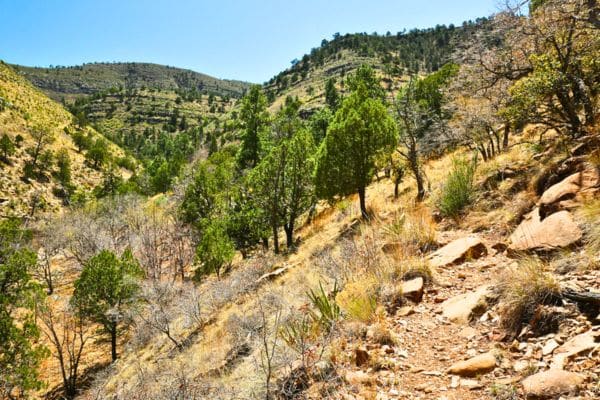
McKittrick Canyon Trail: Renowned for its striking fall colors, this trail is equally celebrated for its wildlife. As you tread its path, watch for mule deer grazing in the meadows and golden eagles soaring overhead. The more secluded stretches of the trail might even offer a glimpse of the elusive mountain lion.
Devil’s Hall Trail: This relatively short hike is a haven for birdwatchers. The Pinyon pine and juniper woodlands lining the trail host a plethora of bird species, from the tiny hummingbirds to the majestic red-tailed hawks.
Guadalupe Peak Trail: As you ascend Texas’ highest peak, the diverse terrains are home to elk, mule deer, and even ringtails.
The peak itself offers an unmatched vantage point for birdwatching, especially during migratory seasons.
Smith Spring Trail: This trail, leading to a natural spring, is a hotspot for wildlife activity. The consistent water source attracts animals like mule deer and wild turkeys.
The trees around the spring often host a variety of songbirds, making it a melodious hike.
Dog Canyon Trail: A less frequented path due to its northern location, this trail is a gem for those seeking solitude and wildlife encounters.
From the stealthy mountain lions to the agile ringtails, the rugged terrains of this trail provide refuge to many of the park’s predators.
Williams Ranch Road: Though more of a drive than a hike, this road leading to the historic Williams Ranch is a wildlife hotspot.
Given its remote nature and proximity to water sources, animals like elk and mule deer are frequently spotted, especially during dawn and dusk.
When embarking on any of these trails, it’s essential to be prepared. Always carry binoculars for a better view, maintain a safe distance from wild animals, and avoid feeding or disturbing them.
Remember, the goal is to coexist harmoniously, allowing these creatures to thrive in their natural habitats while providing visitors with unforgettable wildlife experiences.
Camping in Guadalupe Mountains National Park
Camping amidst the splendors of Guadalupe Mountains National Park offers an unparalleled immersion into nature.
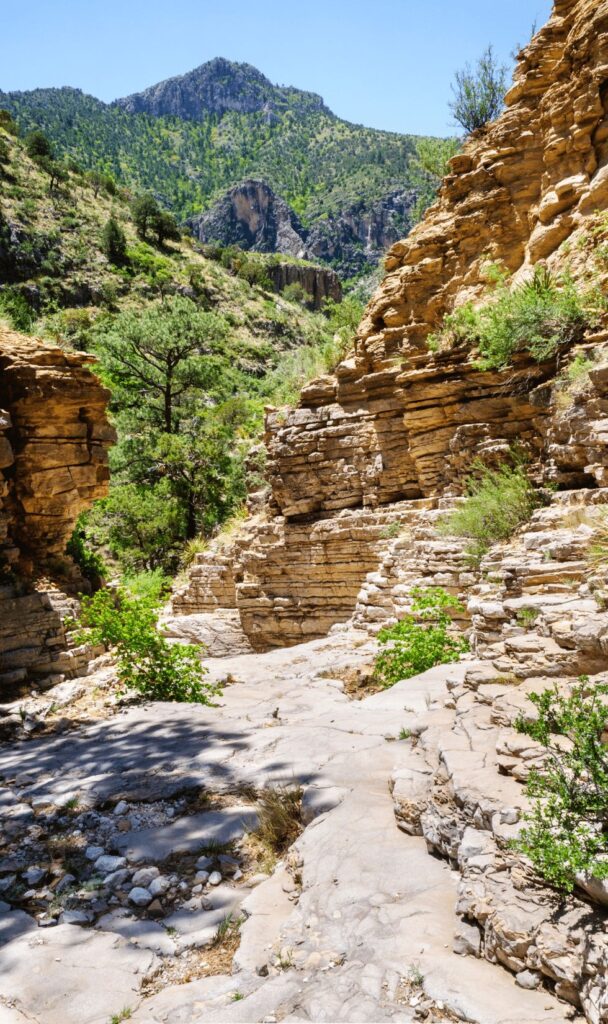
The park, with its dramatic landscapes, ranging from towering peaks to vast desert expanses, provides a unique backdrop for campers to connect with the wild. Here’s a guide to help you make the most of your camping experience in the park:
Campsites Available:
Pine Springs Campground: Located near the park’s headquarters, Pine Springs is a drive-up campground suitable for tents and RVs, though no hookups are available.
This site provides easy access to some of the park’s most popular trails, like the Guadalupe Peak and Devil’s Hall Trail. Restrooms with potable water are available, but campers need to be prepared as there are no showers.
Dog Canyon Campground: Situated in the park’s northern region, Dog Canyon offers a more secluded camping experience.
Nestled in a canyon at 6,280 feet, the temperatures here are cooler, making it a favorable spot during warmer months. The campground accommodates tents and small RVs.
Backcountry Campsites: For those seeking a more rugged experience, the park offers several backcountry campsites.
These sites, located along the park’s extensive trail network, are primitive, requiring campers to hike in with all necessary supplies.
Popular backcountry sites include the Tejas, Blue Ridge, and Mescalero sites. Remember to obtain a backcountry permit before setting out.
Camping Tips and Regulations
Wildlife Awareness: As you are in a natural habitat, be vigilant about storing food securely to avoid attracting wildlife. Encounters with animals like mountain lions or black bears, while rare, are possible. Familiarize yourself with safety guidelines.
Water Sources: While some campgrounds provide potable water, it’s essential to carry ample water, especially if you’re venturing into the backcountry. The arid environment can lead to quick dehydration.
Weather Preparedness: The park’s weather can be unpredictable. Temperatures can vary dramatically between day and night, and sudden storms are not uncommon. Ensure you have appropriate gear and clothing.
Leave No Trace: To maintain the park’s pristine condition, always follow Leave No Trace principles. Pack out all trash, and avoid making new fire rings or disturbing vegetation.
Campfire Restrictions: Due to the park’s fragile environment, wood fires are prohibited. However, campers can use contained gas stoves for cooking.
Reservations: Especially during peak seasons, the campgrounds can fill up quickly. It’s recommended to make reservations in advance or check the availability before arriving.
Camping in Guadalupe Mountains National Park is more than just setting up a tent; it’s about experiencing the profound beauty and tranquility of nature.
Whether you choose a designated campground or venture into the backcountry, the memories you create amidst these landscapes will undoubtedly be cherished for a lifetime.
Conclusion
Yes, Guadalupe Mountains National Park is home to the majestic mountain lions. These magnificent creatures, revered for their grace and power, are an integral part of the park’s ecosystem.
Their presence not only underscores the park’s rich biodiversity but also adds an element of wonder for every visitor.
For those particularly keen on glimpsing or understanding the habitat of these elusive predators, certain areas in the park are more notable. Dog Canyon, with its rugged terrains and dense vegetation, is known to be frequented by mountain lions.
McKittrick Canyon, with its remote stretches, and Williams Ranch, with its proximity to water sources, are also regions where the chances of spotting signs or even the animals themselves might be higher.
However, while the prospect of seeing a mountain lion can be exhilarating, it’s vital to remember that they are wild animals. Safety precautions should always be followed, and their habitats should be respected.
In wrapping up, Guadalupe Mountains National Park offers more than just picturesque landscapes; it provides a window into the lives of some of nature’s most impressive creatures.
Whether or not you catch a glimpse of the mountain lion, knowing that you tread the same grounds as they do adds a layer of magic to the entire experience.

